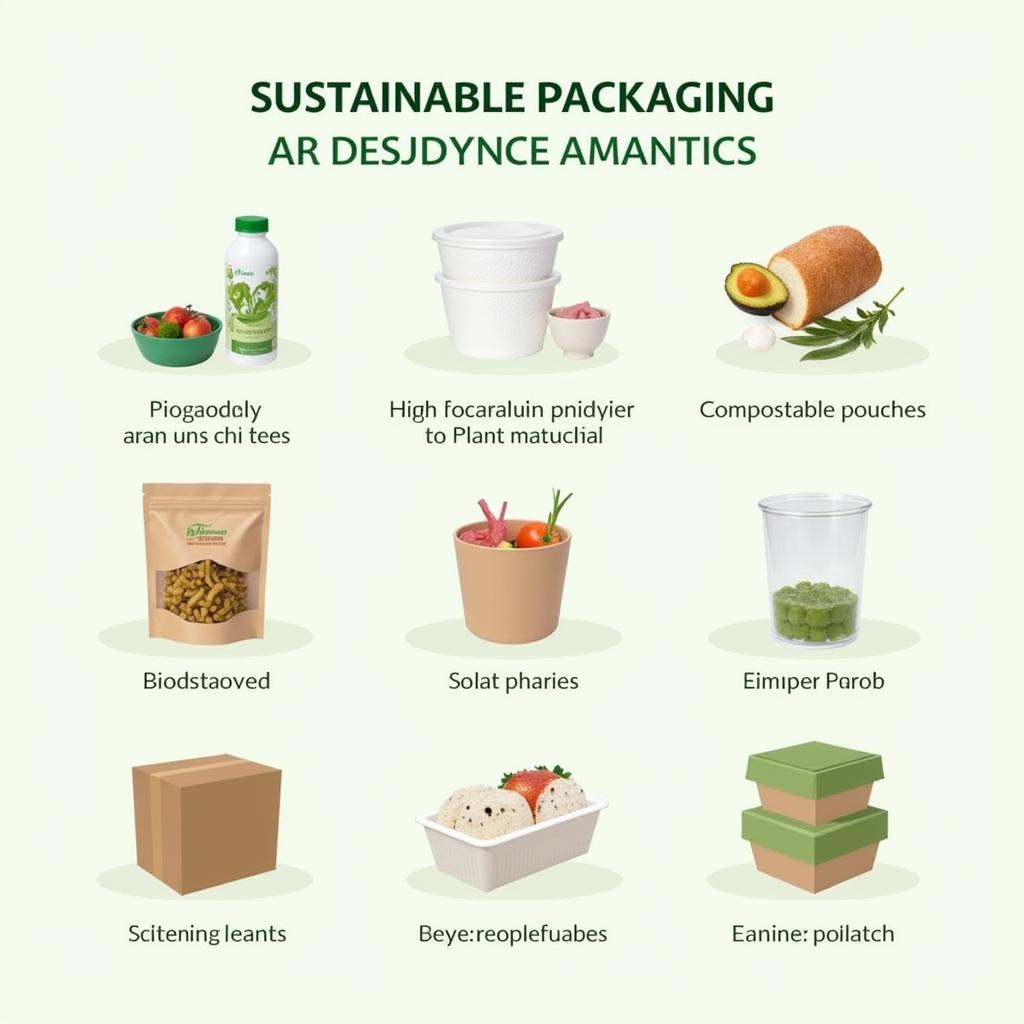Food Grade Plastic Packaging is essential for maintaining food safety and quality. From preserving freshness to preventing contamination, understanding the nuances of food-grade plastic is crucial for both consumers and businesses. This guide delves into the world of food-grade plastic, exploring its benefits, types, safety considerations, and the future of sustainable packaging.
Understanding Food Grade Plastic: What Does it Mean?
Food grade plastic refers to materials specifically designed and approved for direct contact with food. These plastics undergo rigorous testing to ensure they don’t leach harmful chemicals into the food they contain. This certification guarantees the safety and integrity of consumable goods. Choosing the right type of food-grade plastic packaging is vital for maintaining product quality, shelf life, and ultimately, consumer trust.
Types of Food Grade Plastic and Their Applications
Different types of food-grade plastics offer unique properties that cater to various food packaging needs. Understanding these distinctions helps make informed decisions when choosing packaging for specific products.
Common Food Grade Plastics:
- PET (Polyethylene Terephthalate): Commonly used for bottled water, soft drinks, and other beverages, PET is lightweight, strong, and transparent.
- HDPE (High-Density Polyethylene): Known for its durability and resistance to moisture, HDPE is often used for milk jugs, juice containers, and cereal box liners.
- LDPE (Low-Density Polyethylene): This flexible plastic is ideal for squeeze bottles, bread bags, and food wraps.
- PP (Polypropylene): Resistant to heat and chemicals, PP is often used for microwaveable containers, yogurt cups, and ketchup bottles.
- PS (Polystyrene): Used for disposable cups, plates, and take-out containers, PS offers excellent insulation properties.
Ensuring Safety: Regulations and Certifications
Food grade plastic packaging must adhere to strict regulations and certifications to guarantee consumer safety. These standards ensure the packaging materials don’t pose health risks. Organizations like the FDA (Food and Drug Administration) in the United States and the EFSA (European Food Safety Authority) play a crucial role in setting these standards and ensuring compliance.
Key Safety Considerations:
- Leaching: The migration of chemicals from the packaging into the food.
- BPA (Bisphenol A): A chemical found in some plastics that has raised health concerns.
- Recycling Codes: Identifying the type of plastic for proper disposal and recycling.
“Choosing the right food-grade plastic is not just about preserving the food; it’s about safeguarding consumer health,” says Dr. Emily Carter, a food safety expert at the Institute for Food Safety and Quality. “Understanding the regulations and certifications ensures that the packaging we use meets the highest safety standards.”
The Future of Food Grade Plastic Packaging: Sustainability and Innovation
The future of food grade plastic packaging lies in innovation and sustainability. As environmental concerns grow, the industry is exploring eco-friendly alternatives and improving recycling processes. Bioplastics, compostable materials, and reusable packaging solutions are gaining traction as sustainable alternatives. Additionally, advancements in recycling technologies are helping reduce plastic waste and promote a circular economy.
 Sustainable Food Grade Packaging Options
Sustainable Food Grade Packaging Options
Conclusion: Making Informed Choices with Food Grade Plastic Packaging
Food grade plastic packaging plays a vital role in the food industry, ensuring food safety and extending shelf life. By understanding the different types of plastics, safety regulations, and the ongoing push for sustainability, consumers and businesses can make informed decisions about packaging choices. Choosing food grade plastic packaging wisely contributes to both food security and environmental responsibility. It’s about striking a balance between functionality, safety, and sustainability. Explore our articles on reusable dehydrated food bags and metal storage containers for food for more information on food storage options.
FAQ:
- What is the difference between food grade and non-food grade plastic?
- How can I tell if a plastic container is food grade?
- Are all food grade plastics microwave safe?
- What are the benefits of using food grade plastic packaging?
- How can I dispose of food grade plastic packaging responsibly?
- What is BPA and why is it a concern in food packaging?
- What are some sustainable alternatives to traditional food grade plastic packaging?
For more information on pet food choices, see our comparison of ollie dog food vs farmer’s dog. If you’re looking for bulk storage solutions, consider checking out food grade ibc near me.
Need further assistance? Please contact us at Phone Number: 02437655121, Email: minacones@gmail.com or visit us at 3PGH+8R9, ĐT70A, thôn Trung, Bắc Từ Liêm, Hà Nội, Việt Nam. We have a 24/7 customer service team.